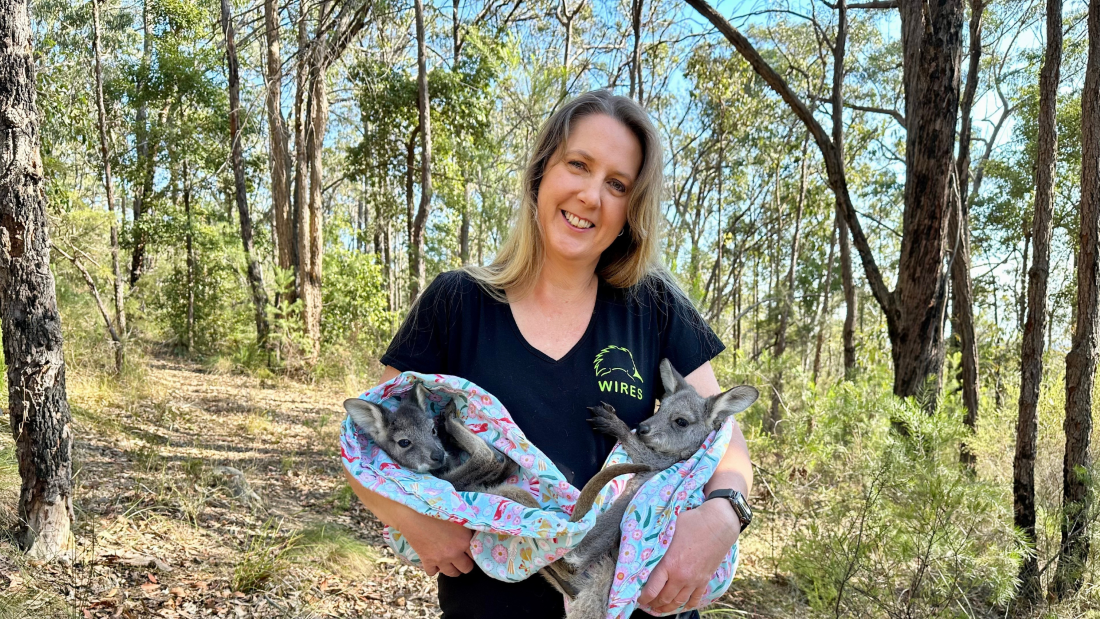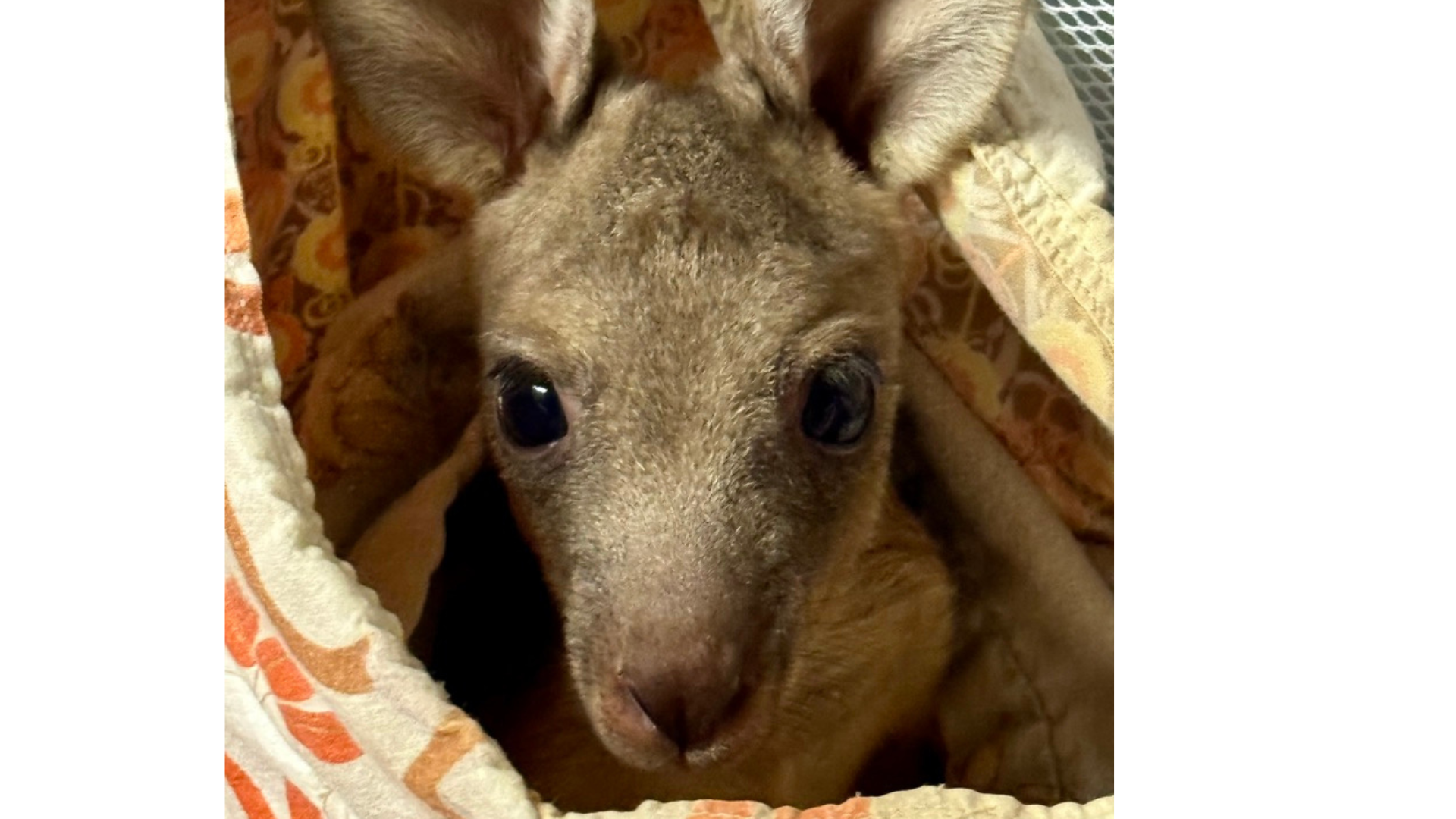
Day in the life of a WIRES carer
Monday, August 19, 2024
When Anne heard the emergency alert on her mobile phone it was close to 2am. She’d given her last bottle feed at 11pm, the next would be at 6am. As a full-time worker and WIRES volunteer, she knew it was going to be another marathon day.
Anne accepted the rescue and drove for 20 minutes on the dark country road. It was raining heavily and the temperature had dropped to four degrees.
30 minutes earlier a woman had witnessed a kangaroo being hit by a car. She’d called the WIRES Rescue Office and we’d issued the emergency alert.
“When you’re driving to these remote locations in the dead of night, you really are hoping that if there are survivors, they haven’t moved off into the undergrowth where they can be impossible to find,” explained Anne.
“Joeys are also often thrown from their mother’s pouch with the impact of the car. You need to make sure you have a good quality torch so you can search the area. Sometimes I spend hours looking for a joey and often return the next day to continue the search.”
On this occasion the mother had been killed on impact, but her joey was alive and still attached to her teat. As an experienced WIRES macropod carer, Anne gently removed the joey from the teat, drove him to a 24 hour vet clinic, and then back to her own home where she placed him in a humidicrib.
“It is always so sad taking a joey from a mother who up until that point, had been a thriving, healthy animal,” reflects Anne.
“All I can do for her, is to save her joey, and provide that joey with the care and nourishment she would have provided, had she not been killed.”
Whilst that’s a commitment Anne has made to hundreds of kangaroos, wallabies and wallaroos in her six years as a WIRES volunteer, the past week had been particularly shocking. Anne attended five rescues over the weekend and another two on Monday. All were hit by cars, all at night or early morning.
“It’s so distressing because many of these deaths could be avoided if drivers slowed down on roads with known kangaroo populations between dusk and dawn. It’s particularly bad in winter because the nights are longer, and kangaroos spend more time out grazing during busy traffic periods, so more animals are killed. It’s also a race against time because orphaned joeys are more likely to die of hypothermia if you can’t get to them quickly."
Anne currently has six young joeys in her care and another five in various stages of development on her rural property.
The very young start in humidicribs to stabilize their temperature and keep them warm. They need six dedicated feeds a day – all with specialist formula that replicates the nutrition of their mother’s milk. It costs around $30 a month to feed one joey with specialist formula - Eastern grey kangaroos will need their milk formula for up to a year; wallabies and wallaroos for around 10 months.

(Above) Alex, one of the young orphans in Anne's care
In Anne’s view, whilst she spends six hours a day with the joeys in her care, and many further hours on urgent rescues, it’s a labour she wouldn't be without.
“When I rescue a joey from the side of the road, they are so deeply vulnerable – they are cold, hungry, motherless – they literally have nothing. To watch them grow confident and strong, and to release them back into the wild – I’m honoured to do that for them.”
Thank you sincerely for the support your provide, helping WIRES carers like Anne rescue and care for orphaned and injured wildlife.
Other Articles
Grampian bushfires devastation
Interview with WIRES Training and Development
Orphaned Jess now ready for release
Our Wildlife Ambulance fleet is growing!
What a difference WIRES care makes
WIRES provides urgent triage for Flying Fox emergency
Displaced koala receives urgent care
National Parks and Wildlife Service warns of dangers of inappropriate feeding
WIRES funded platypus centre provides a lifeline of hope to declining species
